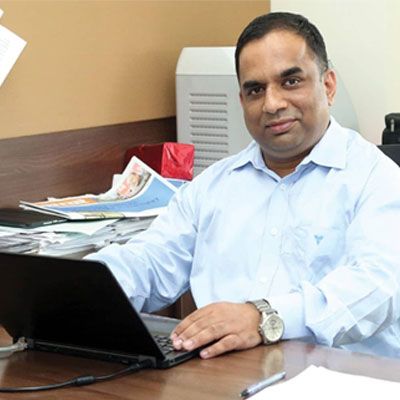We take on the complete job, from maintenance to operations
01 Sep 2019

- Ranjit Ravindran, Head of Business-Mining, Voltas
Voltas’ Mining and Construction Equipment (M&CE) division dates back to 1954, to the post-Independence era that required rapid industrialisation. This was when Voltas was incorporated and the earthmoving, mining and agricultural machinery of the company came into existence.
In fact, Voltas M&CE was among the first engineering product and service companies to introduce earthmoving and infrastructure machineries in India.
Ranjit Ravindran, Head of Business-Mining, Voltas, shares more in conversation with SHRIYAL SETHUMADHAVAN.
How do you see the current mining scenario in India?
The mining scenario is picking up with the public-sector companies doing well. All PSUs, be it NTPC, Coal India, SAIL or NMDC, are bound to increase production, which will impact the buying spree of mining equipment.
Coal India’s targeted production by 2020 may take two to three years more…
Renewable has taken off in India. A recent report mentions that the peak power demand in the country never created a crisis. What makes headlines is the coal crisis and power plants about to shut. So, many companies are getting imported coal and stock levels are better. As there is optimum utilisation, there is no real pressure now to deliver that. However, as coal will be the mainstay of energy for another 20 years, it is expected that Coal India will ramp up production. So if the targeted timeline extends from 2020 to 2023 or 2024, it will not impact Coal India.
How has the last year been for Voltas Mining?
Our business division is a bit different from our peers or competitors. We have gradually shifted from a pure dealership business model like Gemco or Gainwell, which is for Caterpillar in India, or L&T, which is for Komatsu. So we have actually graduated from an agency business to sales, service and spares. That is a triple S business model to more of an independent service model. We are more into service contracts generating revenues through deliverables. The order books are related to the amount of service generated. Everything is proportionate to the risk taken and investments made. Our focus is to give serviced deliverables because these are big-ticket projects that come with lifecycle contracts for machines. We will provide all technical support, manpower and commissioning services. So our revenues are limited to that. We are a primary contractor to ensure deliverables. If the equipment is not maintained as per performance parameters, we are responsible.
What are the challenges faced in this business model?
Retention of skilled manpower is the biggest challenge. Also, it is not easy to develop skills because it is basically on-job and factory trainings; it takes time to deliver these. Also, we are not able to leverage the full potential of the business because our portions are limited to the scope of what we are doing. But that is commensurate with the risk we are taking and in line with our strategy. Hence, our balance sheet is stronger than our peers.
What will be the company’s biggest strength in the future?
Earlier, we were working with principles or business partners; today, we work closely with our customers. In the next five to six years, we see our business model becoming more robust. The industry has the equipment but lacks the skills. We see this as an opportunity down the line when PSUs offload the operations of machineries to companies like us, where we take on the complete job, from maintenance to operations.
Related Stories

